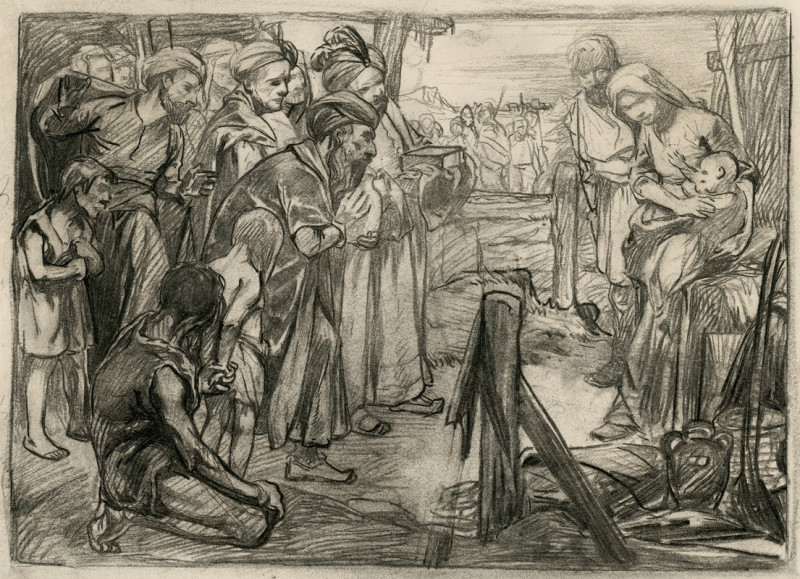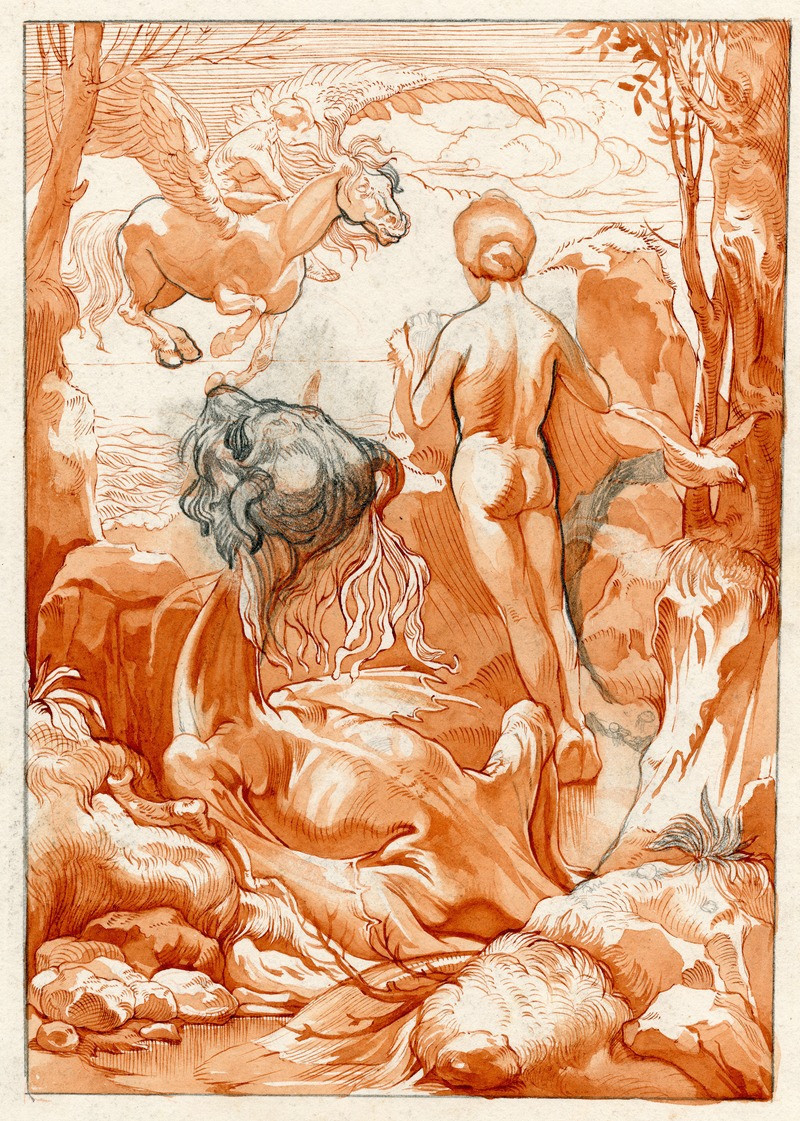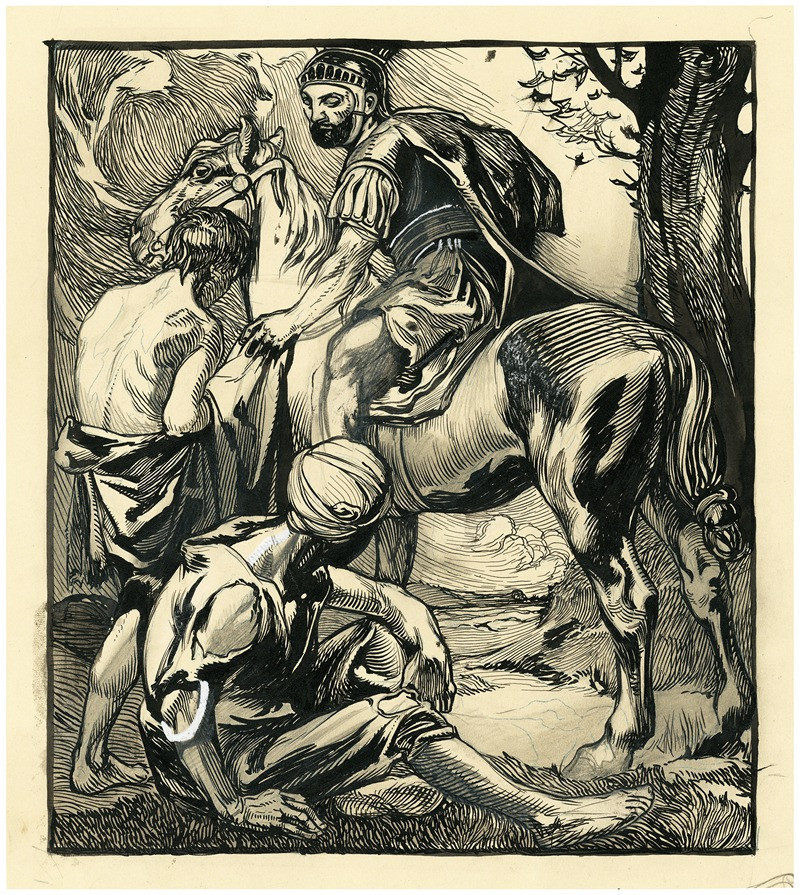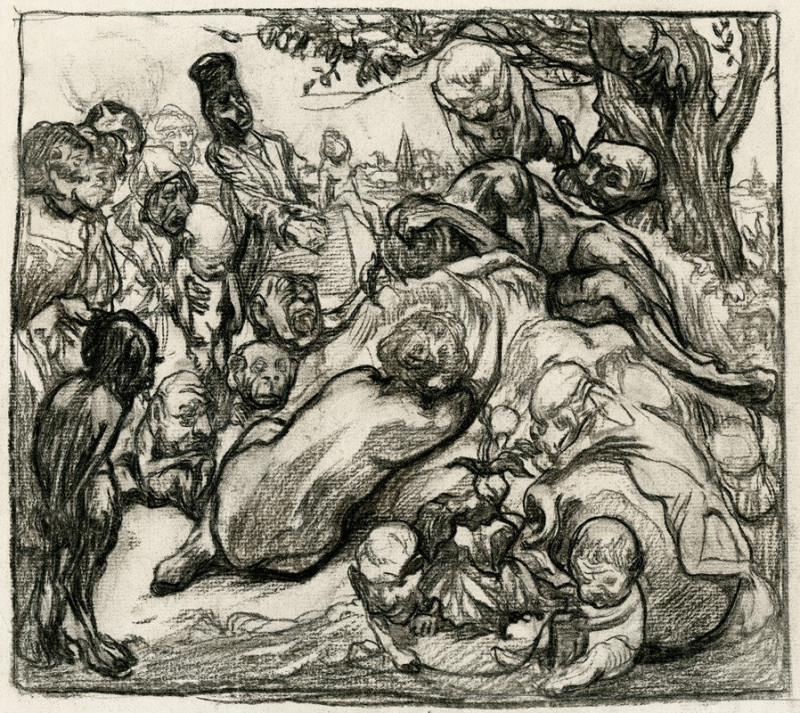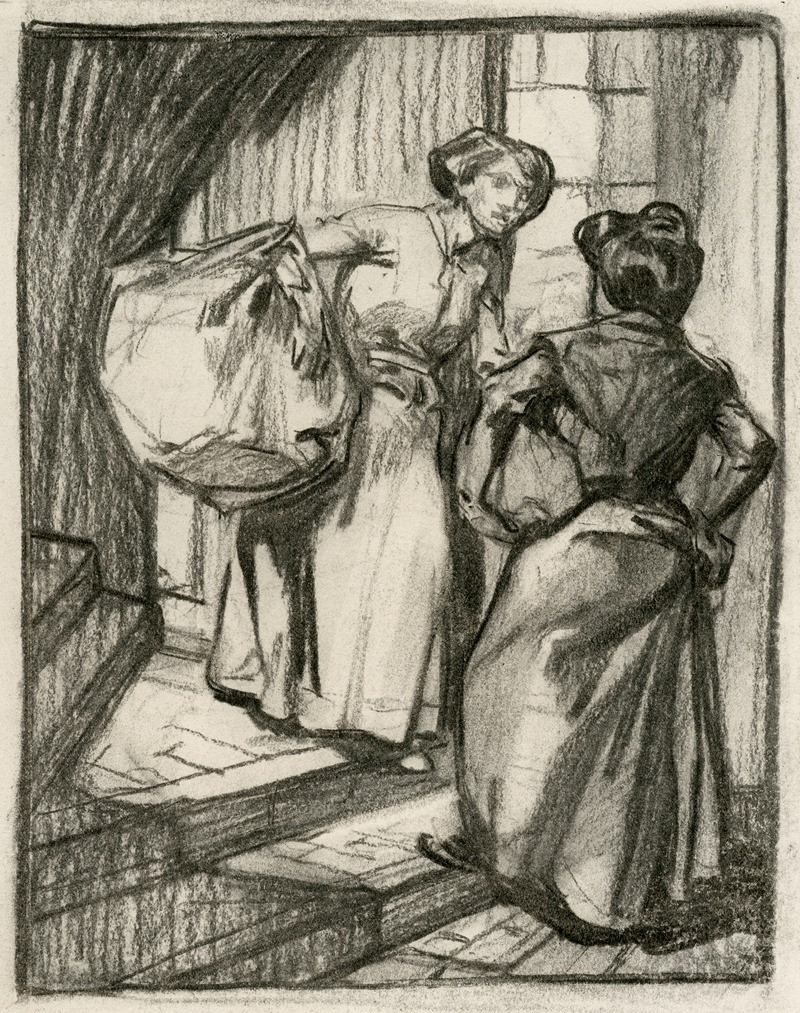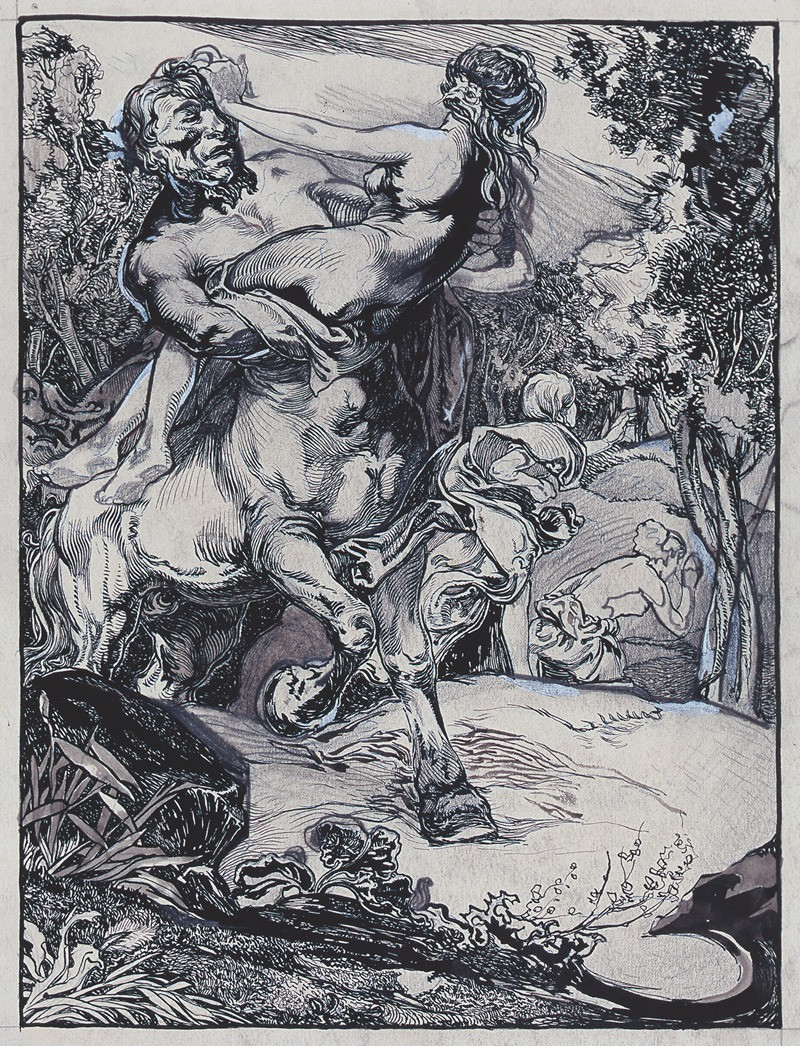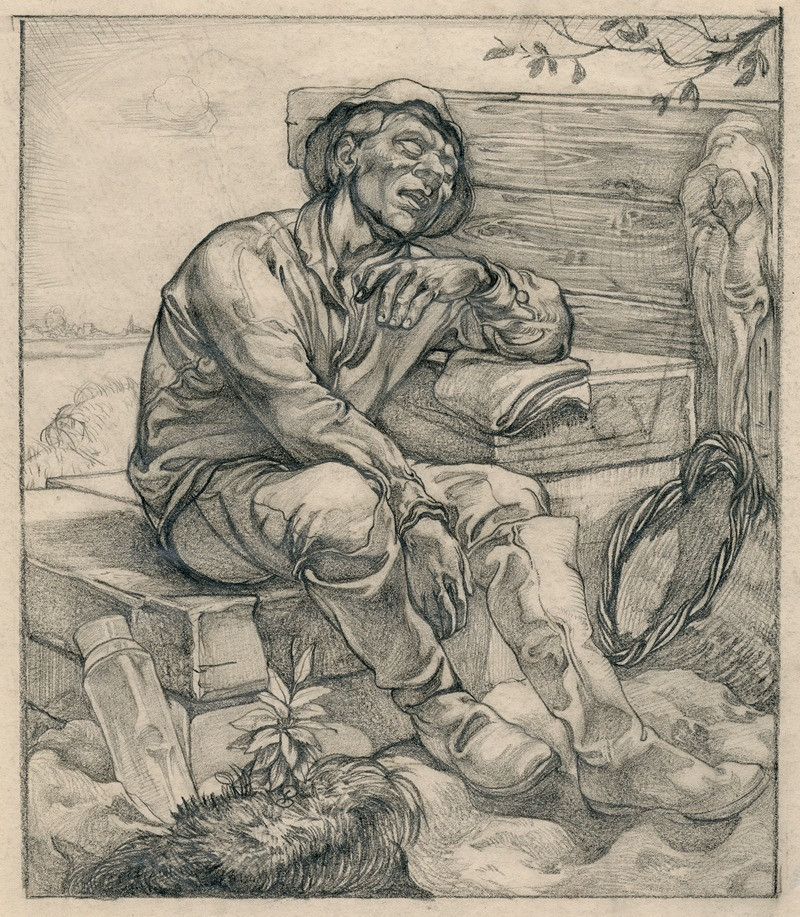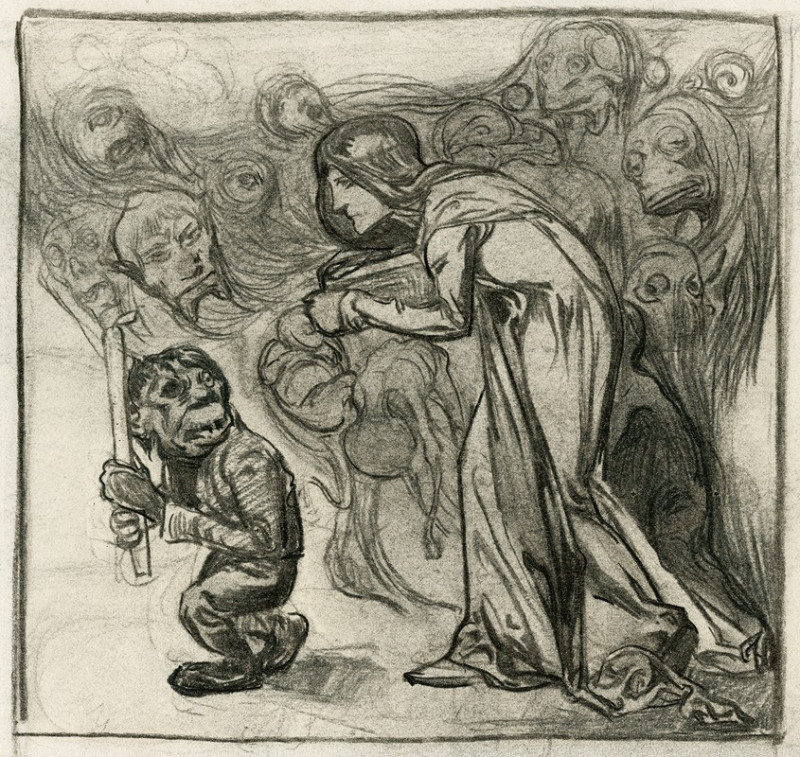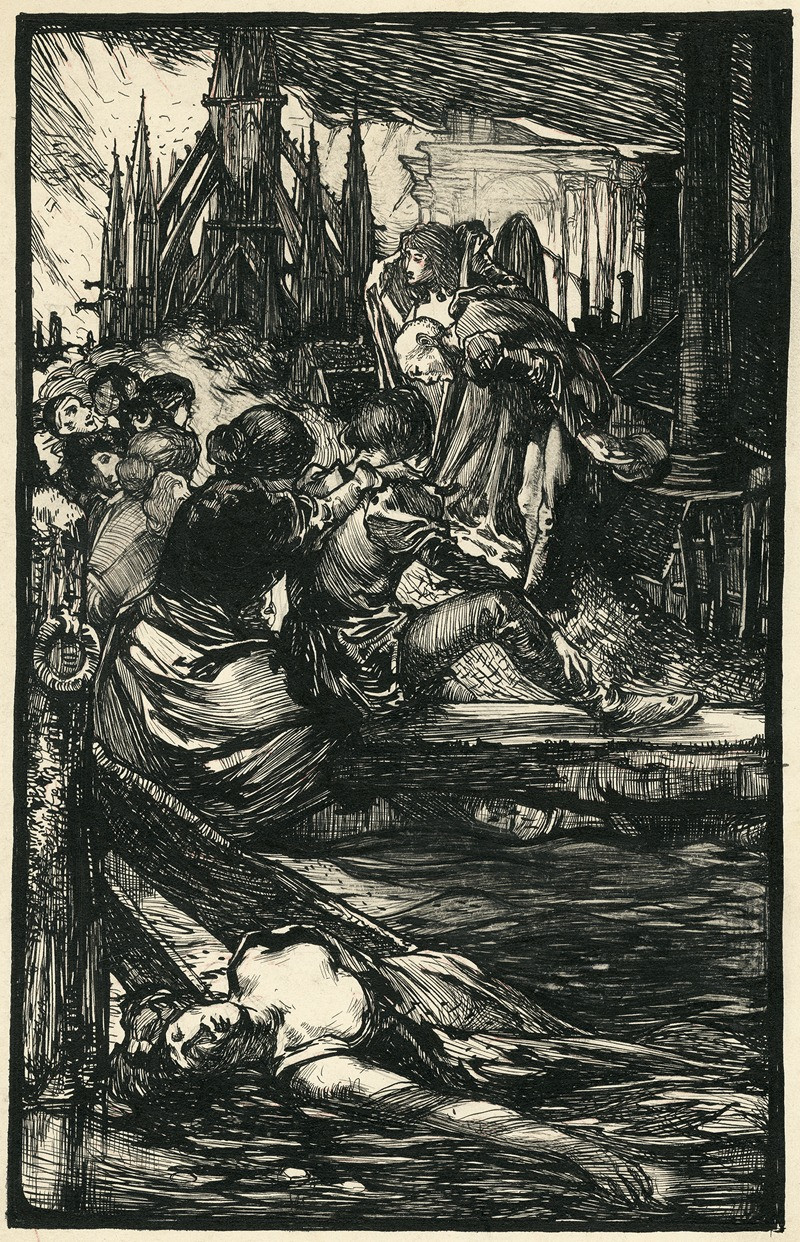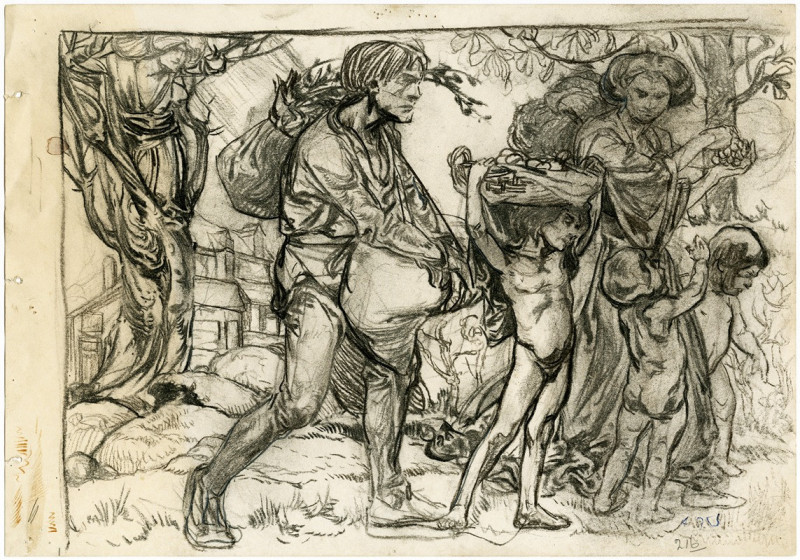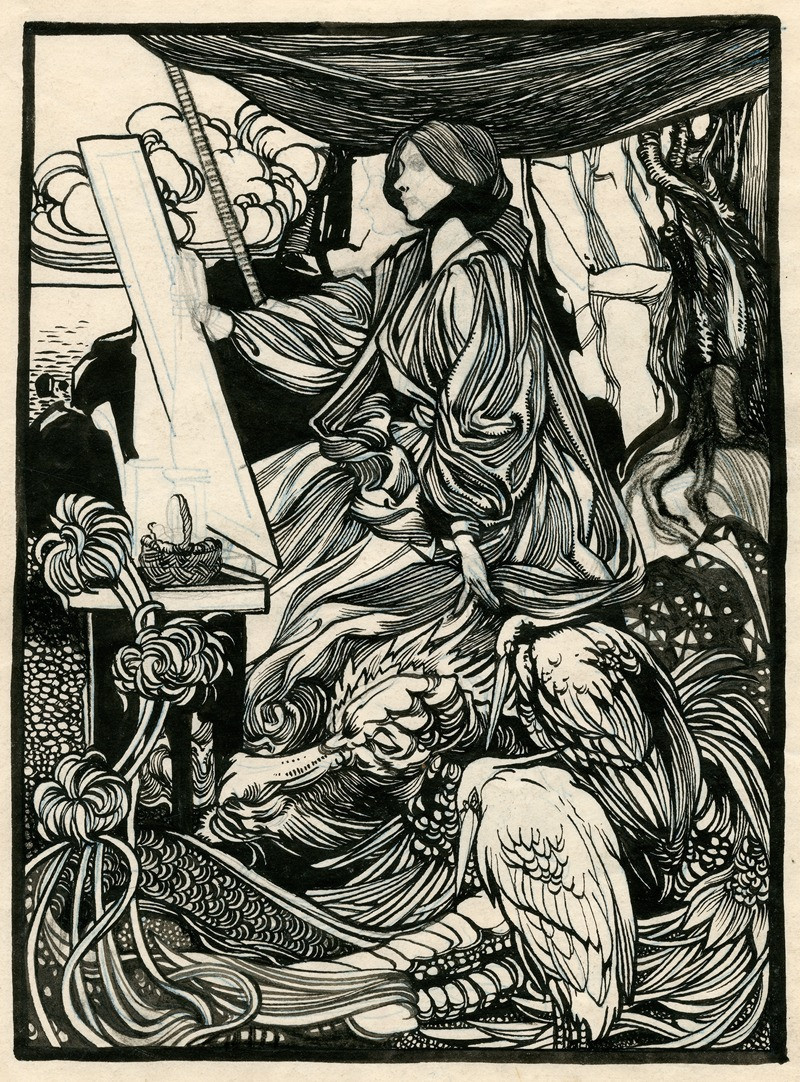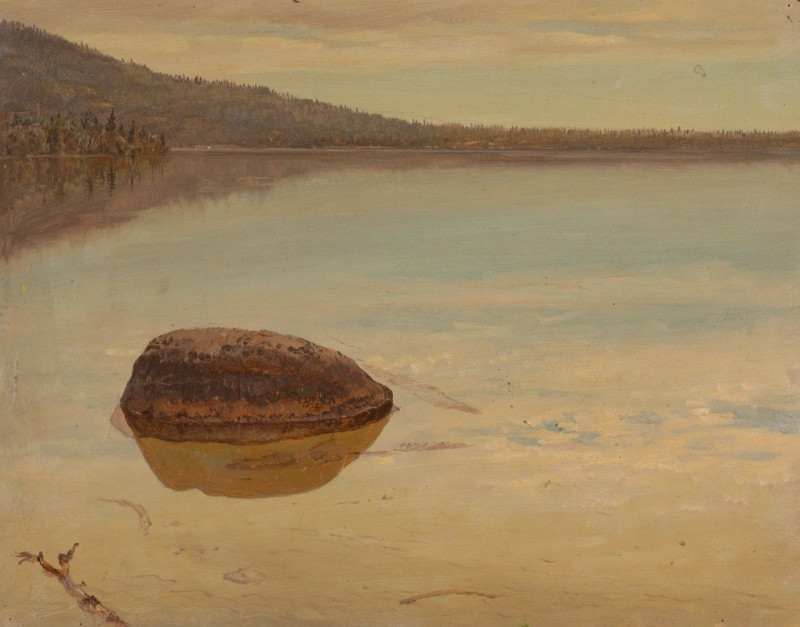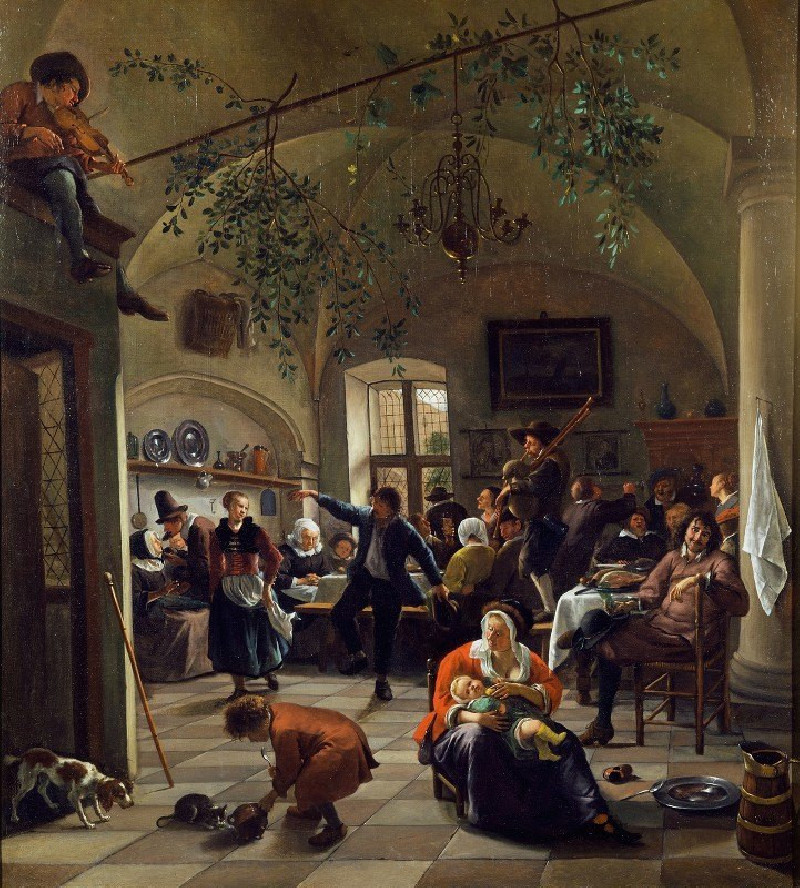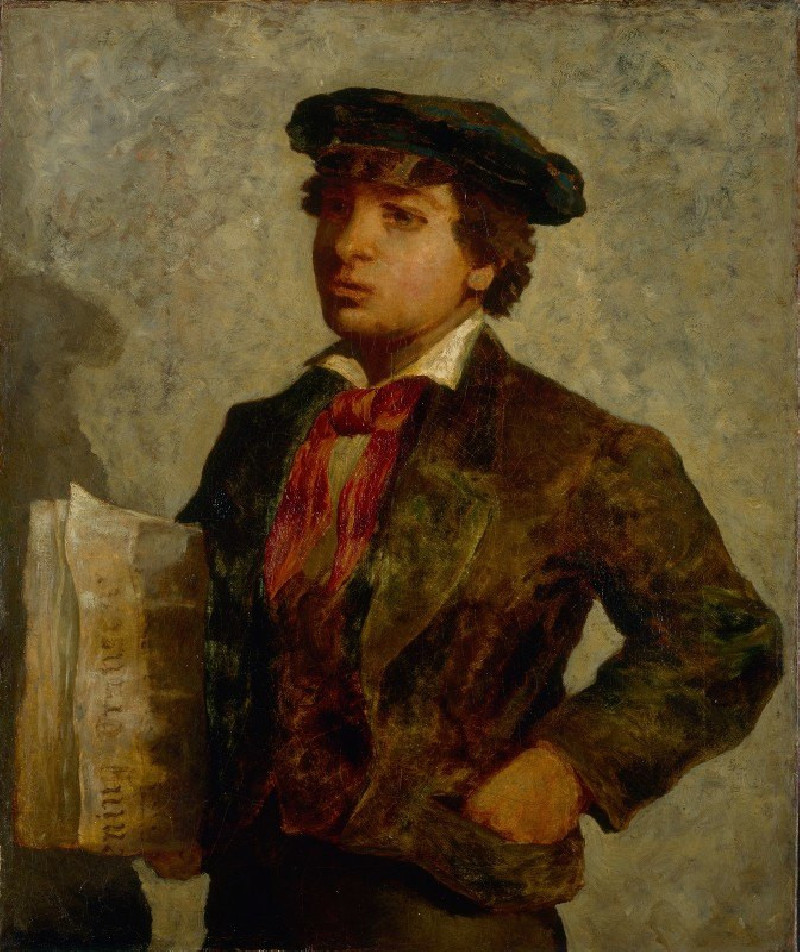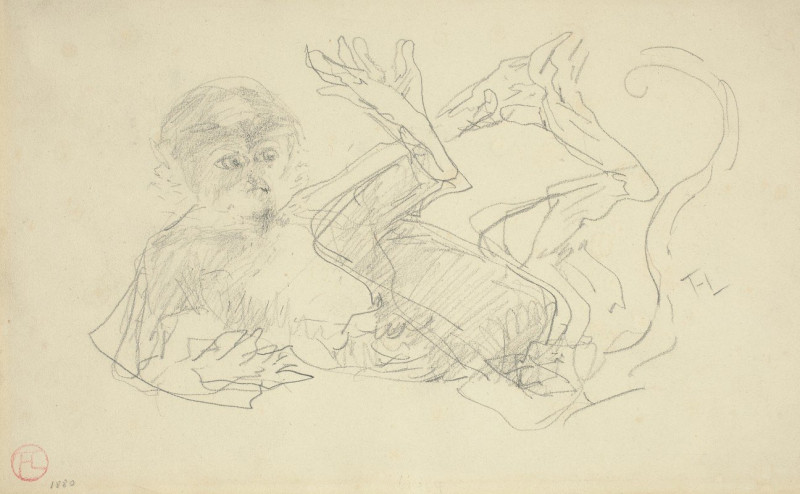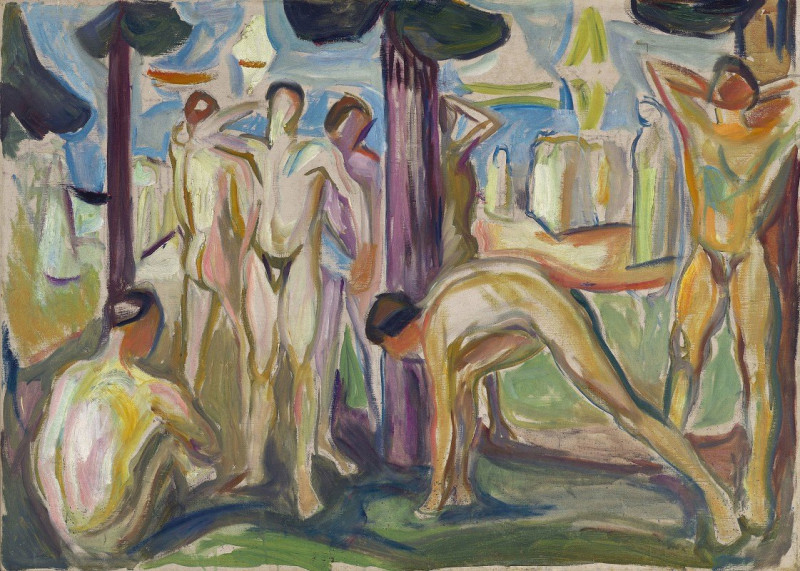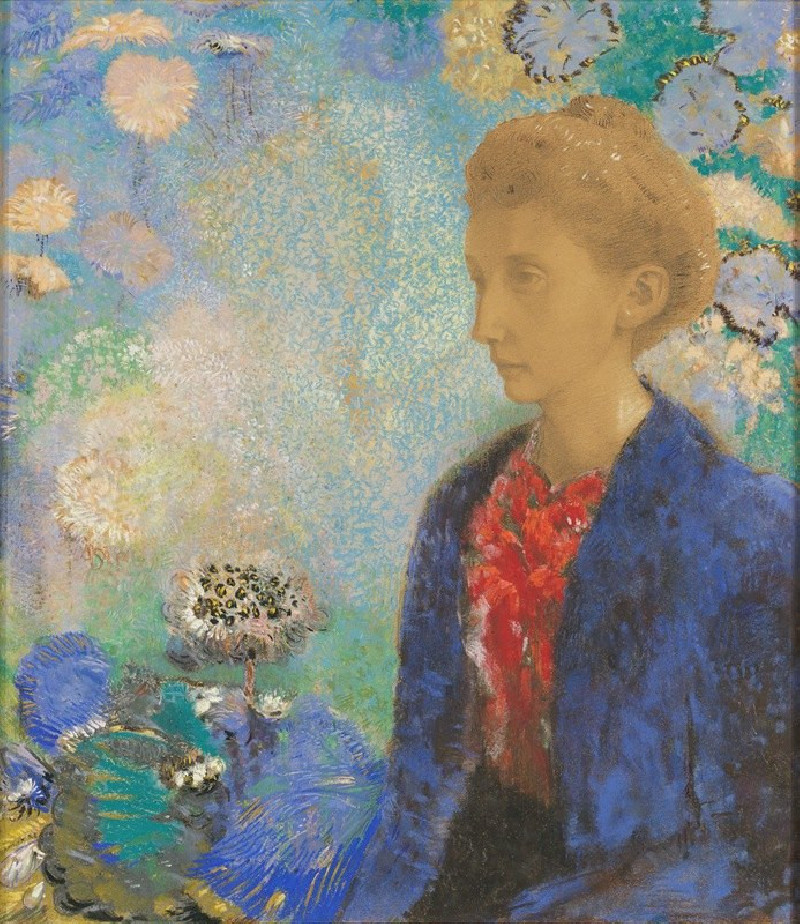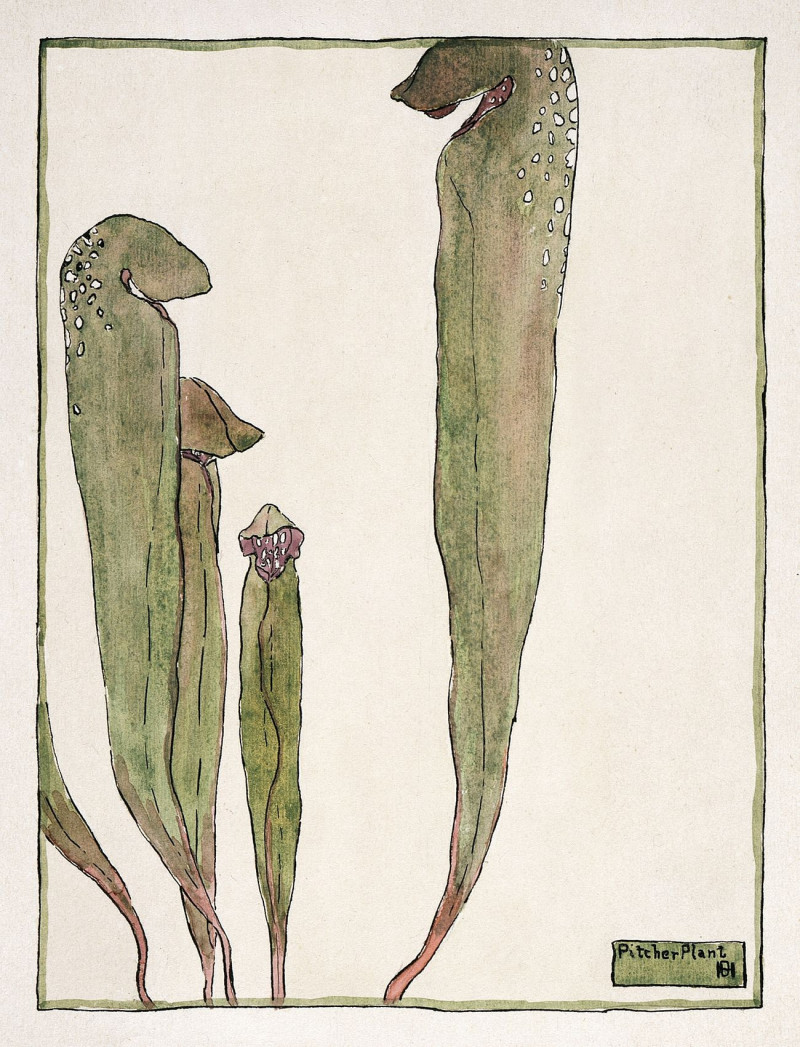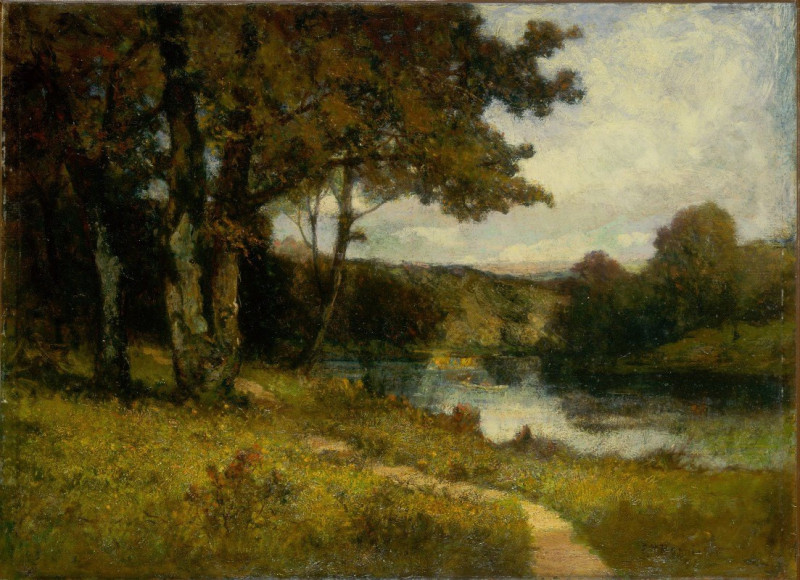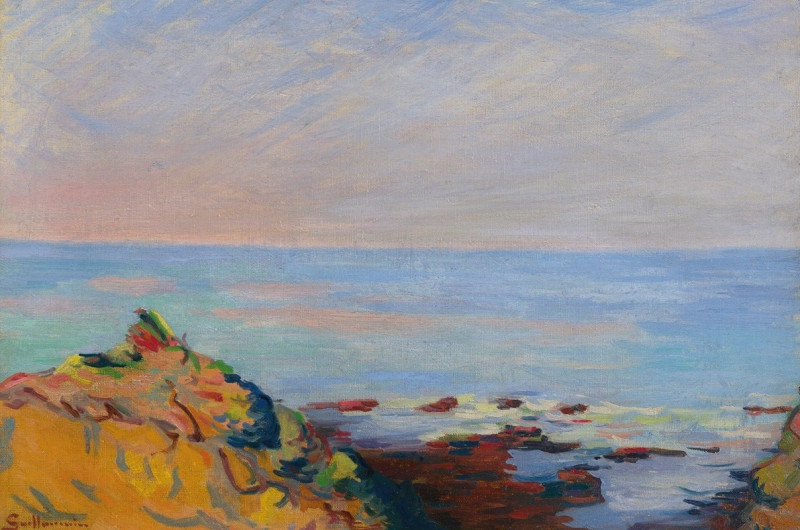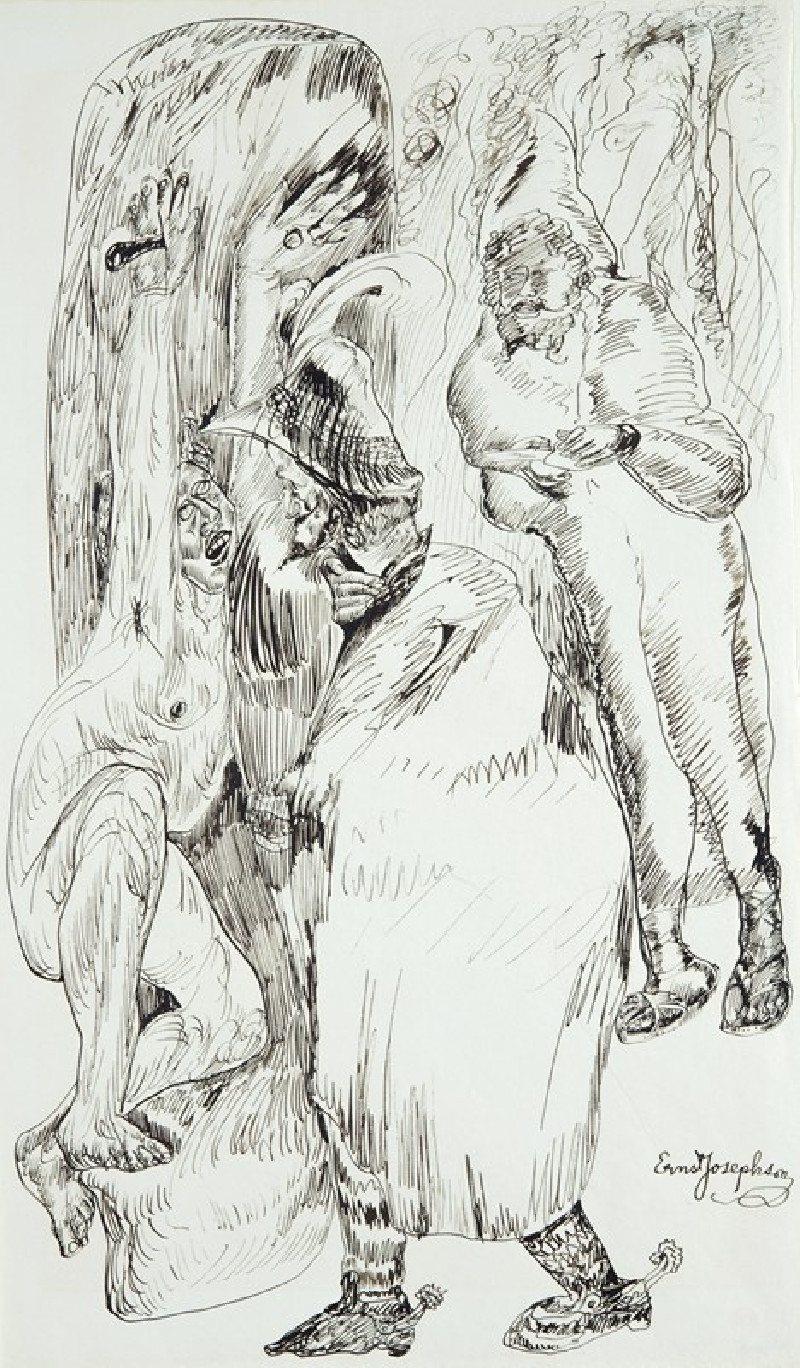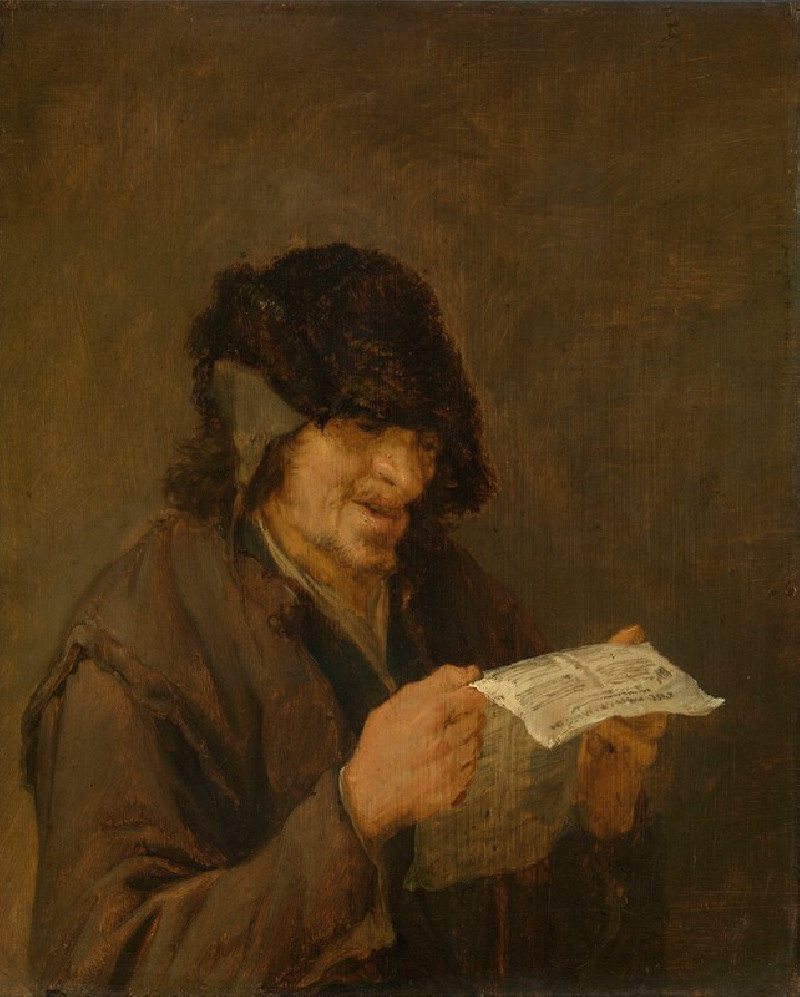Allegorische voorstelling
Technique: Giclée quality print
Recommended by our customers
More about this artwork
This intricate graphite drawing by Johannes Josephus Aarts, titled "Allegorische Voorstelling," is a captivating exploration of allegory wrapped in a classical aesthetic. The artwork features a rich tapestry of symbolism and narrative depth, presenting viewers with a scene that bridges the mystical with the intellectual.At the forefront, two elderly men are engrossed in a massive, open book, symbolizing the pursuit of knowledge and the wisdom that comes with age. Their expressions of intense focus suggest a deep dive into the realms of learning or philosophy. Above them, a youthful, nude figure, possibly representing an angel or muse, delicately intervenes by pulling back a layer of the reality represented by a canvas or curtain. This act can be seen as a metaphor for enlightenment or revealing truths that are not immediately visible, suggesting an interplay between the known and the unknown, the seen and the unseen.The background, composed of architectural forms and floating faces amid swirling lines, adds a surreal, almost dreamlike quality to the scene. This juxtaposition of the grounded scholars with the ethereal elements around them evokes a dialogue between the concrete and the abstract dimensions of human experience."Allegorische Voorstelling" invites its viewers to ponder the relationship between human endeavor and supernatural guidance, merging the tangible aspects of human study with intangible inspirations.
Delivery
Returns
Johannes Josephus Aarts was a Dutch painter, illustrator, lithographer, engraver, etcher, writer, academic teacher and director, lecturer, sculptor and book-cover designer.
Jan Aarts received training in the Royal Academy of Art, The Hague. He was active there until 1911, and in Amsterdam from 1911 to 1934. Initially, until around 1900, Aarts worked above all on engravings. Thereafter he began to also use other graphic methods. In his work, one found depictions of farmworkers, dyke workers and later also tramps, beggars and invalids. Between 1920 and 1930 he produced mostly visionary work with apocalyptic scenes.



